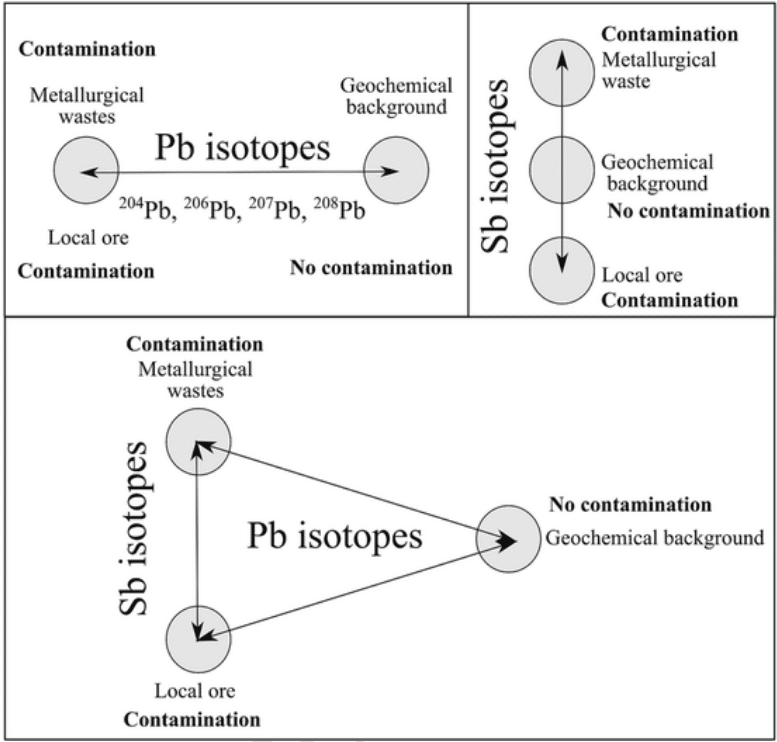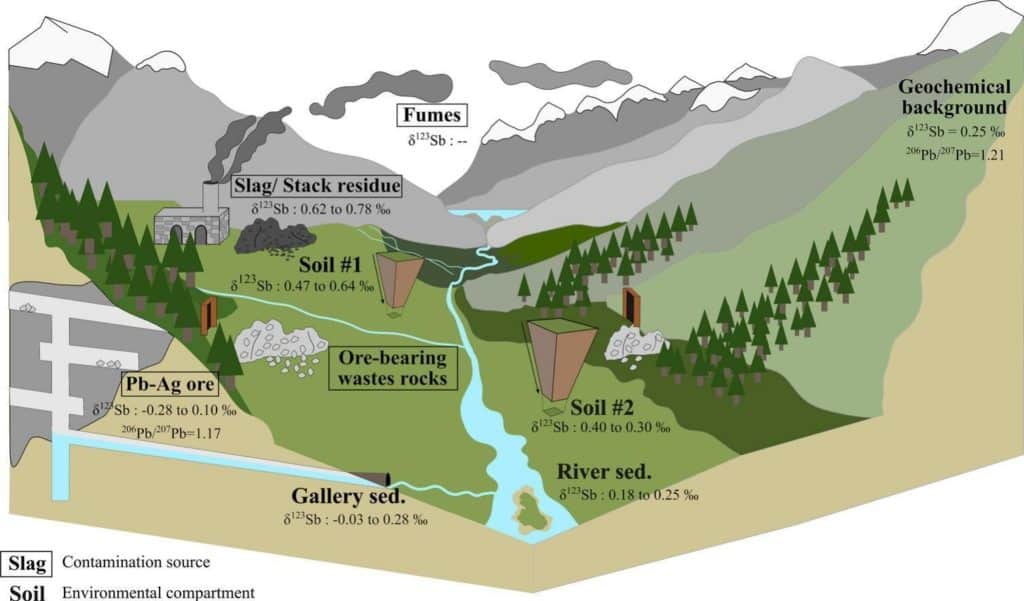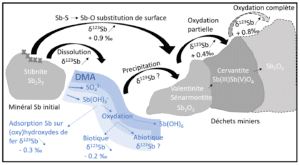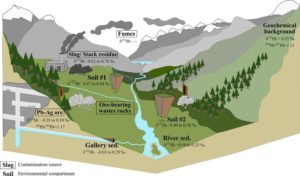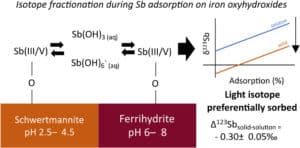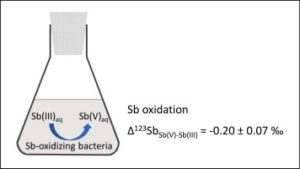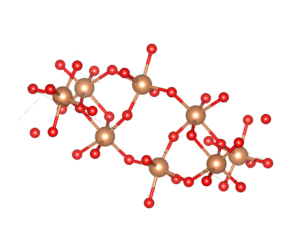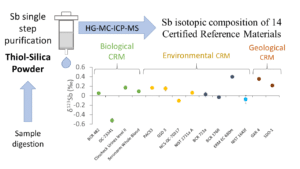Highlights
Soils are locally affected by extreme Pb and moderate Sb contamination.
Anthropogenic soil contamination is restricted to the surface horizons.
Antimony isotopes allowed to discriminate Sb from mining vs metallurgical sources.
Pb-Sb isotope coupling is a powerful tool to identify the anthropogenic sources.
Abstract
In mining and smelting sites, where diverse potentially toxic element-rich wastes (e.g., waste rocks and slags) are stored over a mineralized background, difficulties arise to decipher the influence of multiple sources in the contaminated compartments of the critical zone. This paper aimed at testing the coupling of Pb and Sb isotopes to distinguish the sources of an inherited anthropogenic contamination in a mining and smelting environment. To do so, a selection of contamination sources (ore-bearing rocks, n = 4; slags, n = 2; stack residues – matte, n = 2), mine dewatering gallery sediments (n = 3), river sediments (n = 3) and soil horizons (n = 31) were sampled at the Peisey-Nancroix mining and smelting site (Pb Ag, French Alps), which has been abandoned for >150 years. The contamination sources, the soils and some sediments display similar 206Pb/207Pb ratios (1.173 ± 0.003), but distinct Sb isotopic signature (δ123Sb). Slags and stack residues have similar high δ123Sb signature (+0.62 to +0.78 ‰), whereas the ore-bearing rocks display lower δ123Sb signatures (−0.28 to +0.10 ‰). Such a result indicates Sb isotopes fractionation during smelting, suggesting Sb may be used to distinguish the contribution of metallurgic wastes from that of ore-bearing rocks to the environmental contamination. However, our results indicate that Sb isotopes alone cannot be used to discuss the degree of anthropogenic contamination, and must be coupled to another isotopic system. Coupling Pb and Sb isotopic systems, makes it possible to determine the degree of anthropogenic contamination (Pb isotopes) and the contribution of local ore vs slags (Sb isotopes) to it. This multi-isotope approach provides an added advantage to identify mining and metallurgical sources of contamination more accurately than using a single isotopic system.
Ag, French Alps), which has been abandoned for >150 years. The contamination sources, the soils and some sediments display similar 206Pb/207Pb ratios (1.173 ± 0.003), but distinct Sb isotopic signature (δ123Sb). Slags and stack residues have similar high δ123Sb signature (+0.62 to +0.78 ‰), whereas the ore-bearing rocks display lower δ123Sb signatures (−0.28 to +0.10 ‰). Such a result indicates Sb isotopes fractionation during smelting, suggesting Sb may be used to distinguish the contribution of metallurgic wastes from that of ore-bearing rocks to the environmental contamination. However, our results indicate that Sb isotopes alone cannot be used to discuss the degree of anthropogenic contamination, and must be coupled to another isotopic system. Coupling Pb and Sb isotopic systems, makes it possible to determine the degree of anthropogenic contamination (Pb isotopes) and the contribution of local ore vs slags (Sb isotopes) to it. This multi-isotope approach provides an added advantage to identify mining and metallurgical sources of contamination more accurately than using a single isotopic system.
